|
19th April 2022 It's a Tuesday and we're at The Sovereigns with the Woking Gaming Club. Mesopotamia; source of much history, a birthplace of the world's early civilisations. Also the source of many board games, one of them being Babylonia. Take on the role of a merchant dynasty and attempt to create the most lucrative trade routes. What's in a game?
Babylonia's components are all good. the cards are actually as chunky as the tokens. The remaining components. the tokens and ziggurats are all constructed of wood and feel high quality. The stands are a nice touch. The artwork used on the board is good and portrays what I imagine to be a suitably middle-eastern landscape for Mesopotamia. It is perhaps a little too busy and distracts the eye, however, the hexes help to make the layout clear. The cards all use the same illustration which is a little bland. For the most part, iconography is easily understood. Only some of the ziggurat cards are not immediately clear and will require looking up in the rule book but that only applies when and if the card comes into play. Nothing that would be a problem or approaching a dealbreaker. How's it play? Setup
On to play Babylonia uses a standard turn structure with the active player taking their turn before play moves to the left. In their turn, there are 3 phases active player must complete.
Endgame Play continues until 1 of the following 2 criteria are met: A player has no tokens on their stand. Or There are only 1 or 0 city tiles left on the board. In either case, the game ends immediately! Points are tallied, highest score wins. Overall
If you were to look at a game of Babylonia in progress, you'd be forgiven for thinking that with all these tokens in play at the same time that it's a complicated game but it's not. From the rules write up above there's not too much to learn but like all good games, there's a lot to think about. Right from the start Babylonia provides players with meaningful decisions to make and several paths to scoring VPs which can be prioritised. Often these will vary in value contextually and in relation to other decisions. There will be short term and long term goals. Take ziggurats for example, a player may put tokens next a number of different ziggurats to score points as efficiently as possible but may also choose to concentrate on a single one in order to secure a card. However, taking too long to gain majority on a Ziggurat may lose you some actions. Cards themselves will change in importance, those with continuous ability will be most exploitable in the early game and those with once-only bonuses will be important in the late game - provided of course, that someone else hasn't beaten you to the punch. Farms and cities have an interesting relationship, getting cities quicker than other players can earn a lot of VPs when some farms are scored or more city tiles are acquired. But city tiles need to be surrounded to score - unlike farms which can score immediately. Sometimes It may also take more actions to surround a city; if it looks like a player is going to get majority in a city (Or ziggurat actually.) other players wont be incentivised to complete it early for another player's benefit. Finally, there's the network of tokens that players will create, their trade routes. Finding ways to connect nobles to matching city tiles on other parts of the board can be a good source of points. Especially if a noble can be connect to multiple cities, a city can only be scored once so getting another use out of already played token is useful. It's here small token plays can have big outcomes. Sometimes players will want to put specific nobles into player or sometimes use farmers for rapid expansion. All of this is dependant on what tokens get drawn though. It's likely that something will not go to plan thanks to other players. Adapting to circumstances can also be important. Paying attention to what other players are doing is also vital since - apart from what's on a player's stand - everything is open. It means that it's likely that getting majority will eventually become a race as players' objectives clash and anticipating those objectives can make a difference. With straightforward rules and a brisk playing time, Babylonia is fairly accessible but also provides players with meaningful decisions. I enjoyed it and would recommend it.
0 Comments
15th January 2022 It's Wogglecon and the final game of the day was Ginkgopolis. What's a Ginkgopolis? Good question, I guess it means Ginkgo city but what does Ginkgo mean? It's a type of tree, so Ginkgopolis must mean tree-city. In Ginkgopolis, players take on the role city planners in tree-city and attempt to manage it's expansion, both outwards and upwards. What's in a game?
Ginkgopolis has solid components, the tiles and tokens are constructed from suitability thick, chunky card as are the screens, while the meeples and resources are wooden which is always appreciated. The game makes good use of colour, effectively mixing primary colours with green and emphasising the ginkgo tree motif employed throughout. Ginkgopolis' artwork is high quality, character cards are well illustrated with slightly cartoonish, colourful individuals that follow the game's red-yellow-blue and green theme, the same is true of the building cards/tiles which depict various different types of structures. The iconography in Ginkgopolis is a bit strange, there's not too much of it and it's fairly simple to understand. However, due to Ginkgopolis' almost counter-intuitive rules, getting to grips with it took a little time. Nothing too bad though. How's it play? Setup
In the basic flow of actions in Ginkgopolis, players simultaneously put down cards and then resolve them in turn order.
There are 2 ways in which Ginkgopolis can end. If the building tile supply is depleted a second time or if a player has put all resource tokens on to the city. In either case, the current round is resolved and the game goes to scoring. VPs come from various sources in Ginkgopolis.
Points are tallied, highest score wins. Overall
Firstly, one small fascinating thing about Ginkgopolis is how the game almost operates like a machine! Cards played to build something must not be put into the discard pile, otherwise they'll end up going back into circulation and later, players will end with cards in their hands that can't be used to either get currencies or build upwards. Further to this, new buildings must be given a meeple so that players can track which new cards must be added to the building deck as again, it would leave players without cards to gain currencies or build. Get this wrong and like a machine losing cogs, the game will begin grinding to a halt! I don't know what kind of fevered imagination dreamt up this mechanic but it's both convoluted and brilliant! Ginkgopolis' rules are definitely a little counter-intuitive. For example; when you play a card, that's not what you're building but what you're building on top of. Or after building something, getting to keep the card you used to build something. Additionally; it took a little bit for me to wrap my head around the game. Remember: Playing a card without a tile earns currencies. Playing a card with a tile allows a player to build a tile. I would also say Ginkgopolis is little fiddly for beginning player but none of this a dealbreaker, it's more an indicator of how Ginkgopolis feels a little unusual compared to other games I've played and I don't consider this a bad thing. While there are various avenues to follow for scoring, I feel that the biggest source of VPs would come from controlling districts because it's possible to not only score your own resources but those of other players' too! It can be quite hard to plan ahead though due to the card drafting and they'll be times when you'll want to play more than 1 card from your hand. It pushes you to make hard decisions (And hope the other cards come back around.), it means you have to adapt and spot situations you can exploit. It also means watching your neighbours and trying to gauge their objectives. There's quite a lot of player interaction that goes on and putting the right tile into play at the right time can dramatically alter the landscape. There's also an interesting strategy when deciding which tiles to put in the city. Putting a 20-value tile down makes it harder for other players to build over it, they'd have to pay VPs to build a lowered valued tile, or an extra resource to play a 20-value tile in a different colour. On the other hand, keeping a 20-value tile back can give a player the opportunity to build over other higher value tiles later in the game. The building outwards or upwards mechanics provide plenty of scope here. Expanding outwards can be easier (Provided a player gets the right urbanisation cards.) because a player need less resources and will also earn currencies when doing so. The downside is that it's easier for other players to build over your tiles. The opposite is also sort of true, building upwards tends to be costly, but it's also more costly for other players to build over them. Building tiles also puts the related card (And it's bonus action.) in to play in the player's personal area, creating the opportunity to combo actions into bonuses. Players will need to balance the need to acquire currencies with the need to build tiles. However, as the city landscape and a player hand changes, so can the options to do either of these. Adaptation is vital and every decision can be critical This made my choices feel meaningful when playing Ginkgopolis, which is always good. I'd say that Ginkgopolis is a mid-weight tile laying game with some fairly interactive area-control gameplay that gives players interesting and changing options. It took a little time to warm to Ginkgopolis but I enjoyed the game and think it's worth giving a try. 10th November 2019 Sunday lunch time at 'The Sovereigns' in Woking. 50 Fathoms is still on hiatus, so board games it is. We actually begin the day with a card game. A little 2 player 'Alice in Wonderland' themed game called 'Wonderland'. Yeah... Someone spend a while coming up with that. What's in a game? Wonderland is quite a minimalist game. There is a deck of cards for each player and each deck has only 7 cards in it. 7! Despite the differing artwork, the 2 decks are identical.
The theme though, is entirely replaceable, it could as easily been about cats v dogs or elves v orcs or whatever v whatever. How's it play? The purpose of Wonderland is to place cards down in the playing area (In a 3x3 grid.) to 'win' the rows and columns. After deciding who will be playing who, each player should take their respective deck.
Rows and columns are 'won' by calculating the value of each players' cards in each row and each column, the player who has the highest value in each row and each column 'wins' it and takes that row or column's face-down card. However, it's not just the value of the cards that matter here. The poison and the cake play a vital role here.
Overall
Wonderland is an interesting little game that seems to be about trying to out-predict the other player and ruthlessly take advantage of any error the other player may make. Playing a card with a cake or poison symbol facing the right way can dramatically change the scores. There's also an element of bluffing here, as each player essentially has to discard 3 cards and only play 4. This means it not possible to count cards as a player never knows what their opponent has put into their row or column. Wonderland is a quick game to play and is small and portable. I don't think it's a game that stands up to a lot of repeatedly play. But has a quick filler for 2 players it's OK. 15th October 2019 Tuesday evening has rolled around again and we're at 'The Sovereigns' in Woking. This can only mean it's games night. Our game of the evening is 'Gold West'. A game for rootin' tootin' prospectors and quite possibly outlaws and bandits. What's in a game? There are quite a lot of components in Gold West. The general game components are:
How's it play? Before beginning, setup needs to be carried out:
Supply resources Resources are supplied through the supply track.
Use metals So now that resources have been moved out of the supply track, they must be used. There are 5 resources and 3 of them are precious metals - gold, silver and copper. In this stage, the precious metals are 'spent'.
Build camp/settlement or loot After using metals, the active player has to build a camp or settlement, or loot. This is done using wood and/or stone resources that were bought out of the supply track along with the metals.
This means that having more than 1 stone or 1 wood is a waste as these will be discarded. A player only needs a stone or a wood, or a stone and a wood. That's it for a player's turn, it seems like a lot, but in play it's pretty straightforward. Endgame Gold West is played over 11 rounds, players have ten tents to use and there's a further round with no tents. Then we get on to scoring, points are scored in the following ways:
Overall
There's a lot to like about Gold West. The supply mechanic is equal parts infuriating and brilliant. If you put your resources in the lower boxes and have trouble getting them out effectively, it's only your own fault for being greedy for points. But if you're able to manage the flow of resources well, it's a good source of points. Talking of points, Gold West presents players a good variety of ways to score points. There is always a way to accumulate points, it's a question of optimisation and individual strategy. Players are always given meaningful choices on how to approach scoring. Even if a player fails to bring out a stone or wood resource, they still have the open to loot. I also like how resources become revealed as players build camps and settlements on the map. It's a nice touch. The game is also a nice looking game, I like the stagecoach meeples and there's something pleasing about looking at the game map covered in lots of tent meeples. All in all I liked Gold West. 7th September 2019
Saturday evening. Matakishi's. Game night. Tonight we decided to play another classic board game. This time it was 'Britannia', a game originally published in 1986, over 30 years ago. Britannia is a historical game of invasion and conquest and when I say invasion and conquest, I really do mean constant invasion and conquest. In Britannia, players do not play a single nation or tribe or whatever. Instead they play a colour and each colour has 4 nations of varying size. Each colour will have 1 nation that benefits from a 'major invasion', this explained later. Britannia is played over 16 rounds and centuries of time. The game starts with the Roman invasion (So around 43 A.D..) and end with the Norman invasion (Around 1066 A.D..). Even though each player has control of 4 factions, the factions do not appear at the same time in the game. They appear when 'historically appropriate' in various turns throughout the game. What's in a game?
How's it play? The rules for Britannia are relatively simple. The complexity comes from the interaction with the other players. Before the game begins we have set up. Each player chooses a colour and is given all the relevant tokens for that colour, the play begins.
One other thing worth noting are 'major invasions'. Each player will have a faction that has a major invasion at some point. A major invasion means that the relevant faction gets to turns in a row. Endgame Britannia is played over 16 rounds. Scoring occurs throughout the game, but not on every round. In fact not all the factions score at the same time, some factions score on entirely different rounds. Additionally, when scoring is carried out, different factions score different points for controlling different areas of the board. Which means that different factions may have different priorities. However quite often opposing factions score points for the same regions, invariably pushing them into conflict with one another. After all the rounds have been completed, points are tallied and highest score wins. Overall Britannia is a wargame and as such is very confrontational. It's a game that charts the historic invasions and conquests of early Britain. It turns out there were a lot of invasions and conquests! Players will more or less be in constant conflict with other players and there's no way to avoid it. Combat is a key component in Britannia: Luckily, the basics of the rules are simple to remember. Mostly players will be looking into how to expand into and hold high scoring areas and this drive most of the game's conflict. Asymmetrical rules make Britannia interesting and quite unique. I like how the asymmetrical factions give different players advantage at different times. So for example; whoever has the Romans will gain an early lead, but after that they will have smaller factions appear. Combined with the asymmetrical scoring that gives different players different objectives means that the end score is always unpredictable. I do have a couple of minor criticisms of Britannia. Britannia should only really be played with 4 players. Sure you can play with 3 or 5 players, but it's not optimal. Britannia can take about 4 hours to play, so it requires quite a time commitment. I guess a millennia of invasions of Britain can't be played out quickly! But these small criticisms aside; Britannia is an involved but entertaining game to play, provided you don't mind a game about conflict with other players. 4th June 2019 Tuesday night and it's game time at 'The Sovereigns' in Woking with the board game club. Does the idea of game about slowly growing trees excite you? If the answer is yes, then Photosynthesis is the game for you! What's in a game? All of the components of photosynthesis are made from card. All of the of the tokens, even the trees. There are no plastic meeples or soulless wooden cubes here. And even though this is the case, they are still good components. When a bunch of trees are all on the playing board. It looks impressive. In photosynthesis there is a main playing board and a sun marker to indicate the direction of the sunlight. Additionally, each player has their own board that contains most of the seeds and trees needed to play the game. Players also start with some seeds and trees that are not on the player board that are 'available' to use. There is an important difference between the two that will explained a little further down. How's it play? The premise of Photosynthesis is to plant seeds, grow the seeds until they become the largest possible trees and then score points from those trees. In a normal game, play continues until the sun has completed 3 revolutions of the board. It takes 6 rounds to complete 1 revolution. Thus players each have a total of 18 turns to win the game. Each round consists of 2 phases. Phase one.
So now that all the players have calculated their light points, play proceeds to the next phase. Phase two.
That's it for the basic rules. There are, however a few other rules to remember which are very important.
All of these rules basically serve one purpose - to slow the game down. And that makes complete sense, this is a game about growing trees after all. It forces players to think a few turns ahead. It takes time to score points. A tree can only score points when it is a 'large' size. It takes 4 actions to plant a seed and then go to a small, medium and large tree. Then it takes a 5th action to score it. Furthermore it will take more actions and light points to 'buy' the seed and 3 different sized trees from the player board in order to do this. Overall
Photosynthesis is a peculiar beast: It's a little bit like a worker placement game with trees earning light points from their positioning and it's a little bit like an area control game, where larger trees will shut out surrounding smaller ones. It's simple to learn but forces players to adopt a 'ent-like' mentality towards the games varied choices, strategies and occasional hard decisions. It's slow place means players cannot burn light point to do one thing quickly. Sometimes it's possible to speed events by sacrificing seeds or trees, but this can be tricky choice as it's permanent. I'm sure there are ties when it is prudent to do so. But slow and steady, that's the way to go. I think all of this good and makes for a good game. I'm sure Treebeard would agree! |
AuthorI play, I paint. Archives
March 2024
Categories
All
|

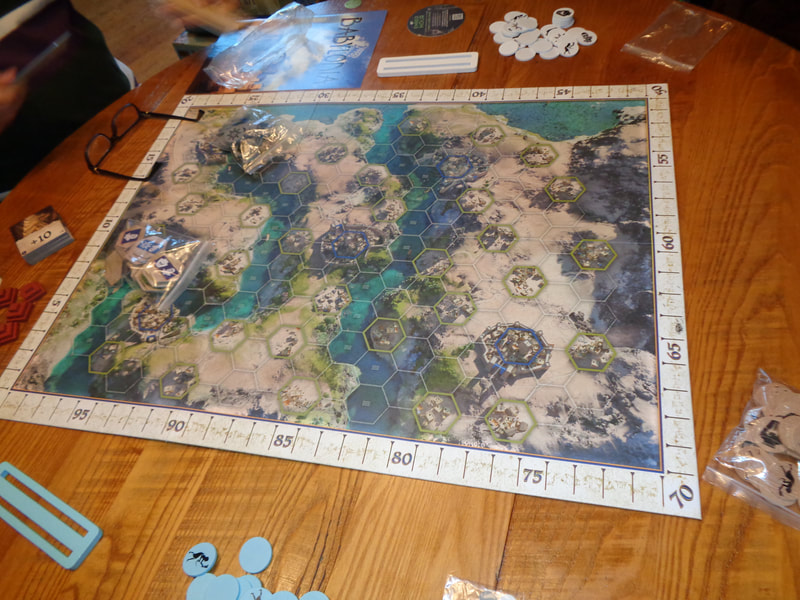
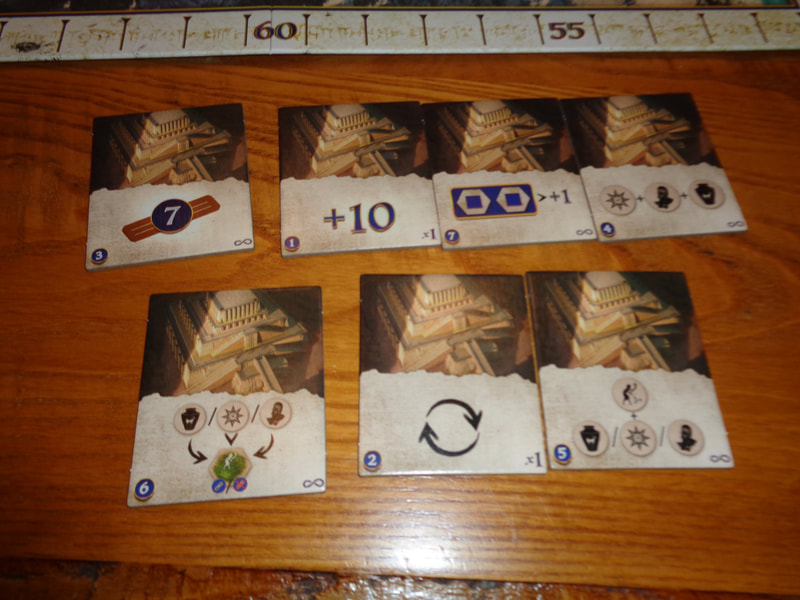
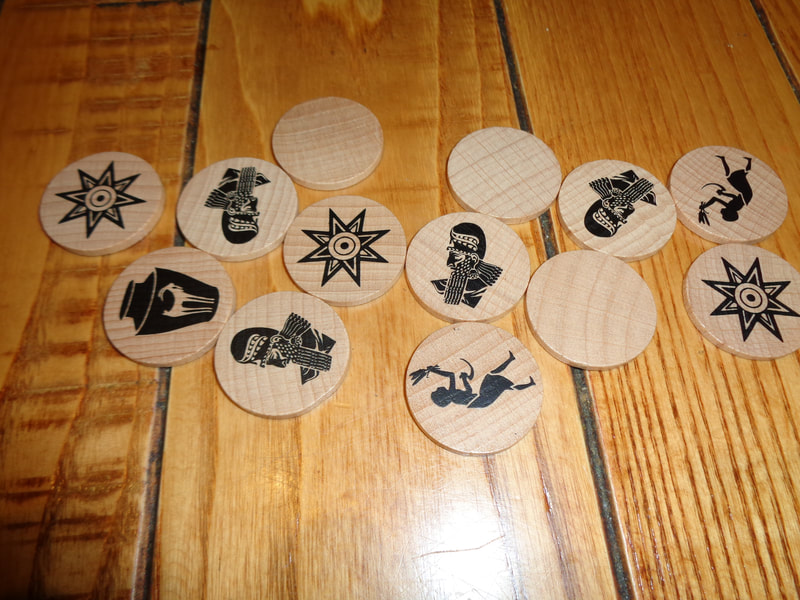
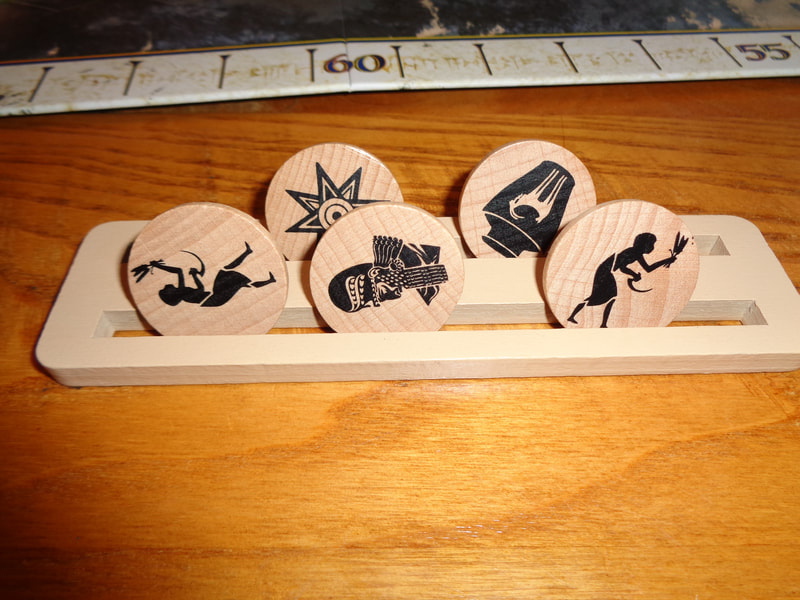
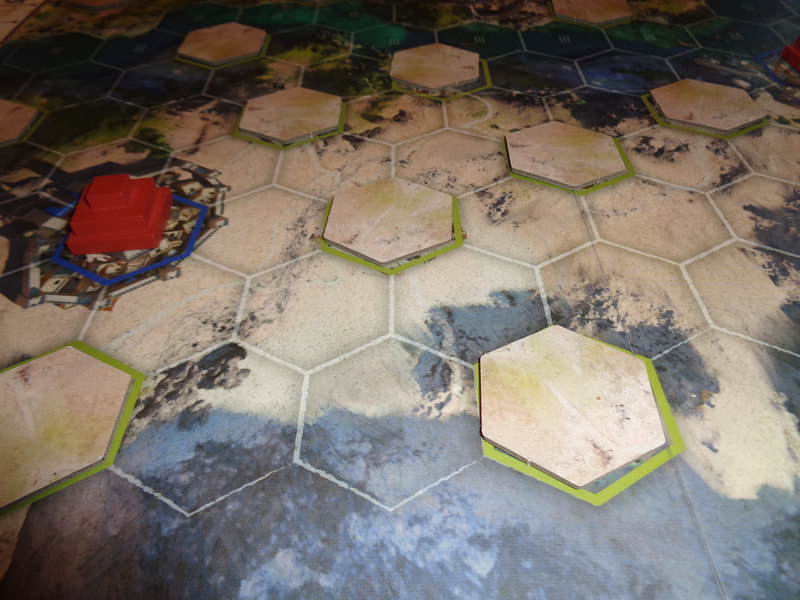
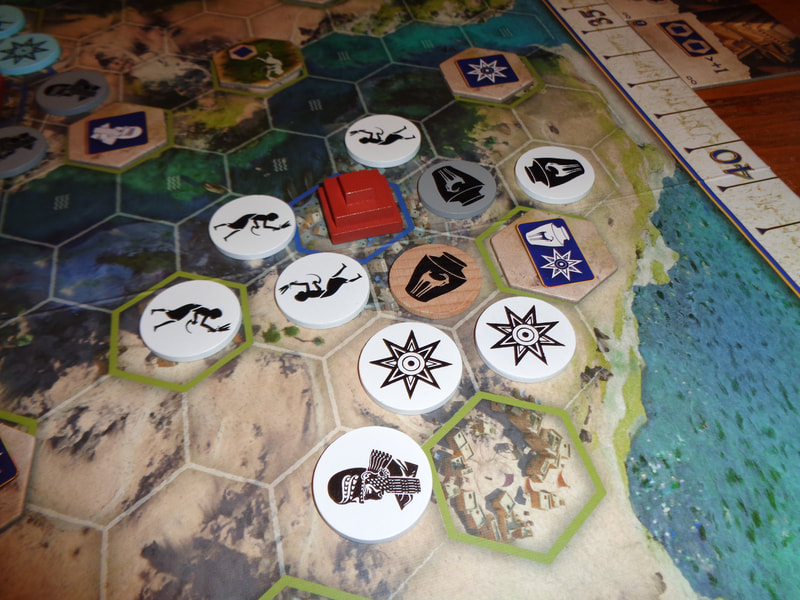
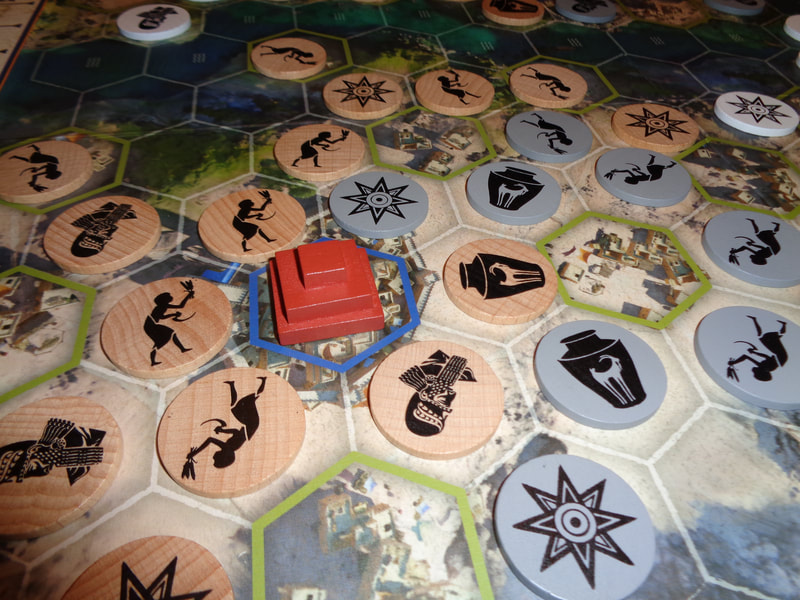
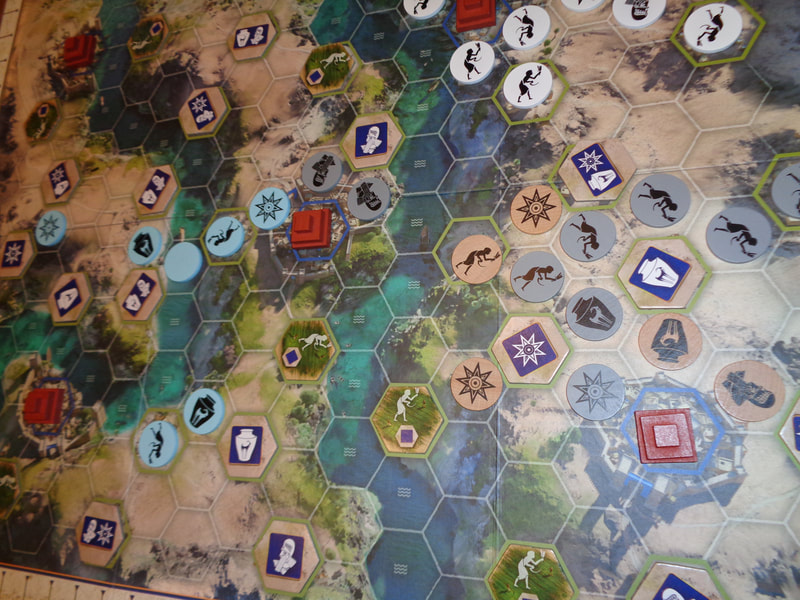
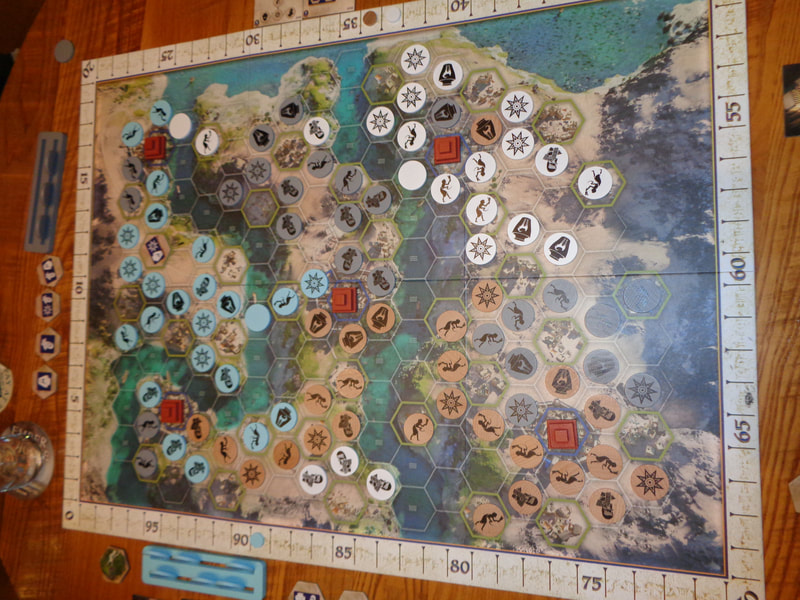
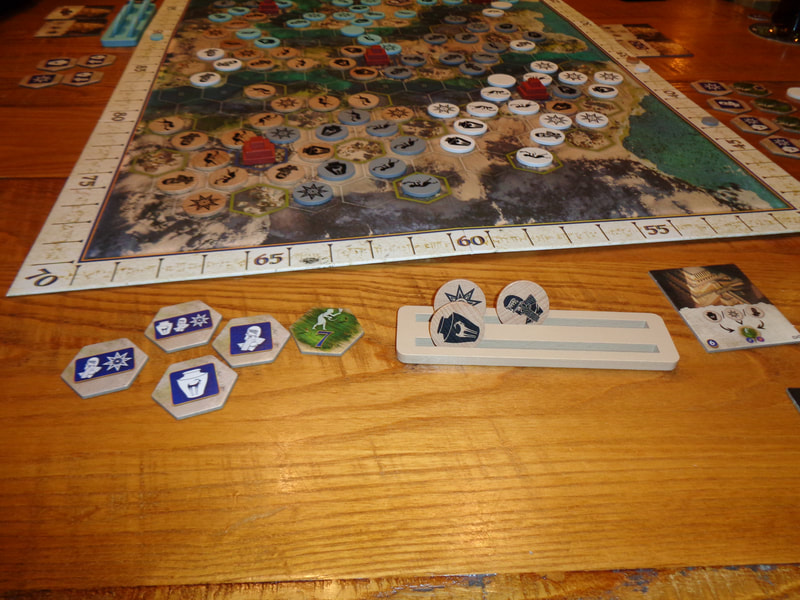
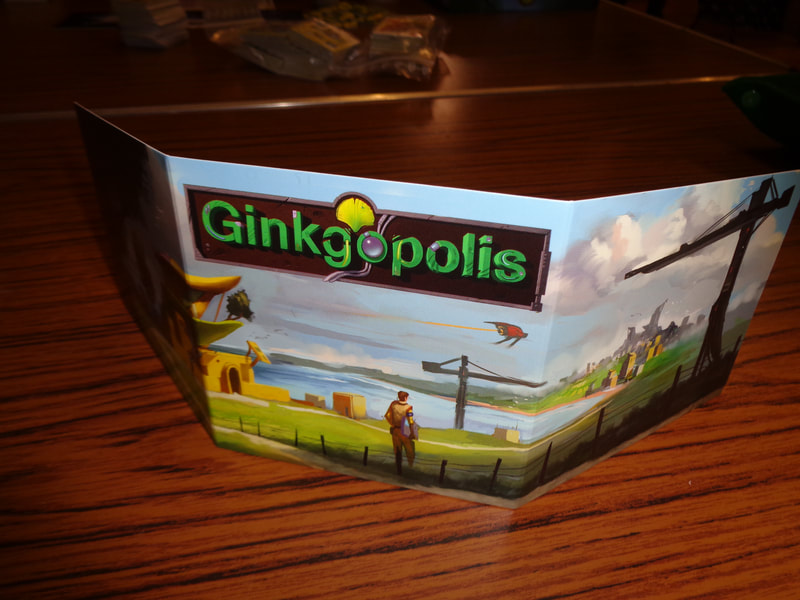
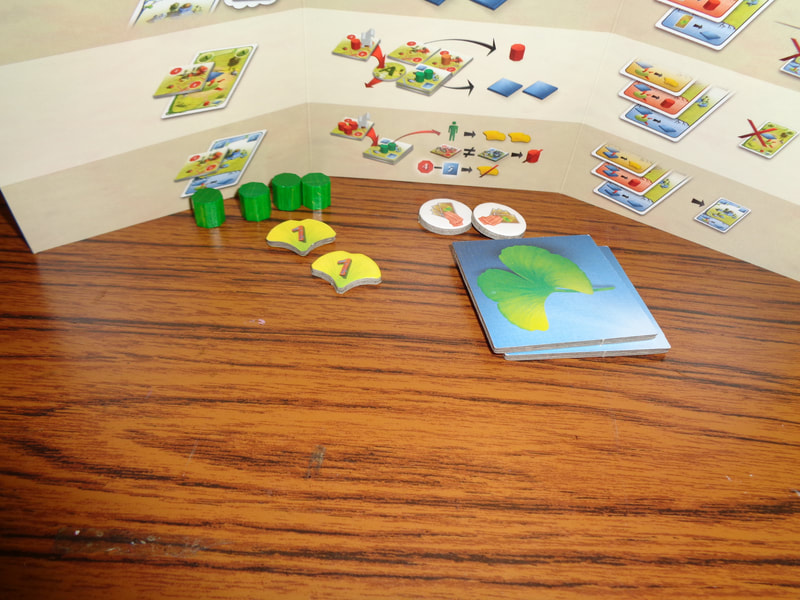
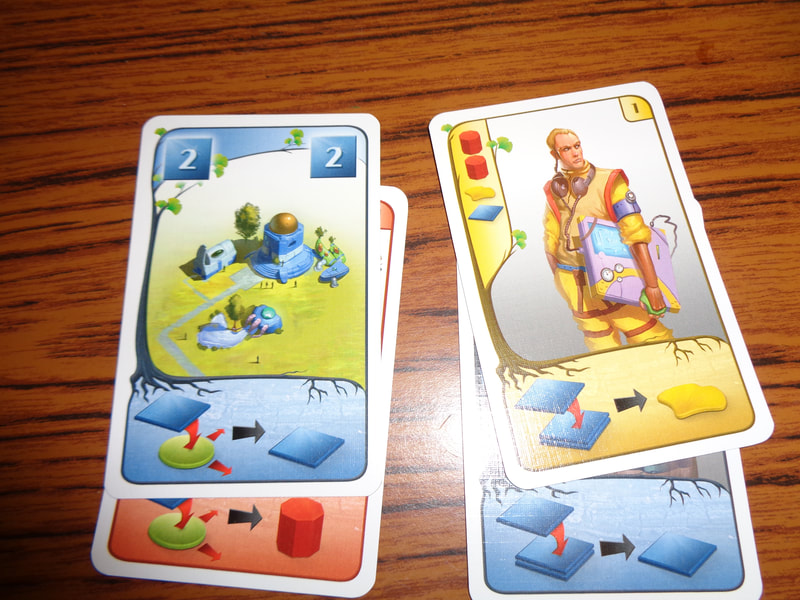
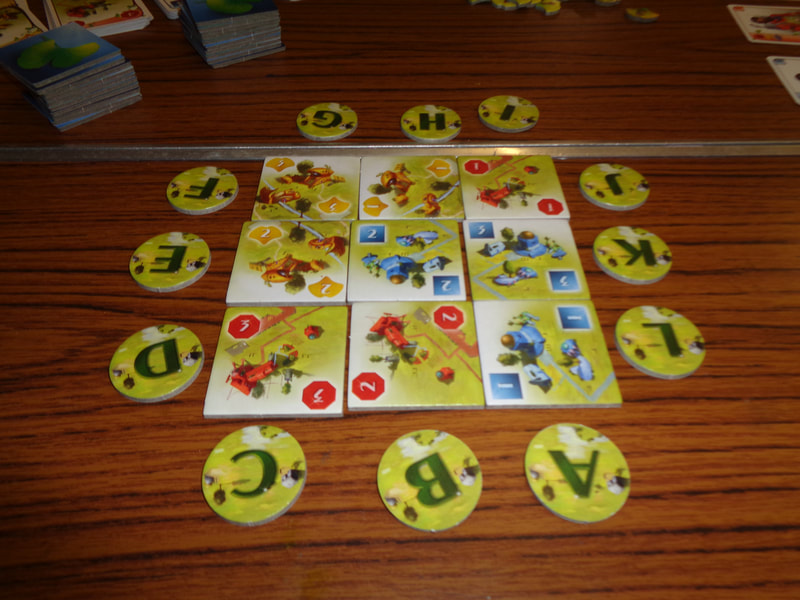
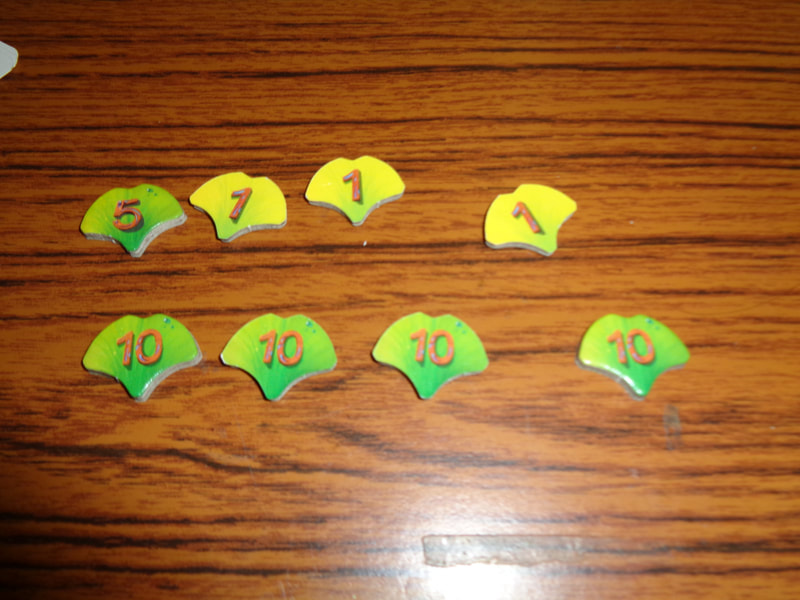
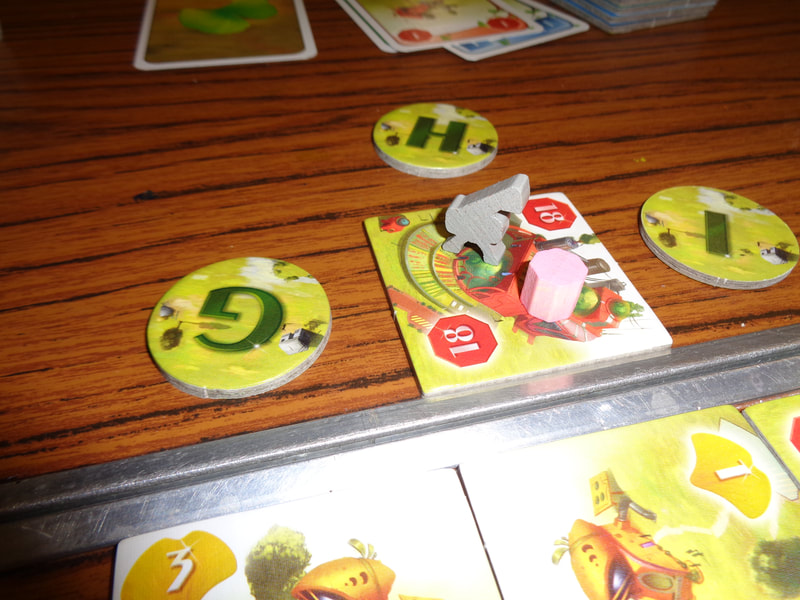
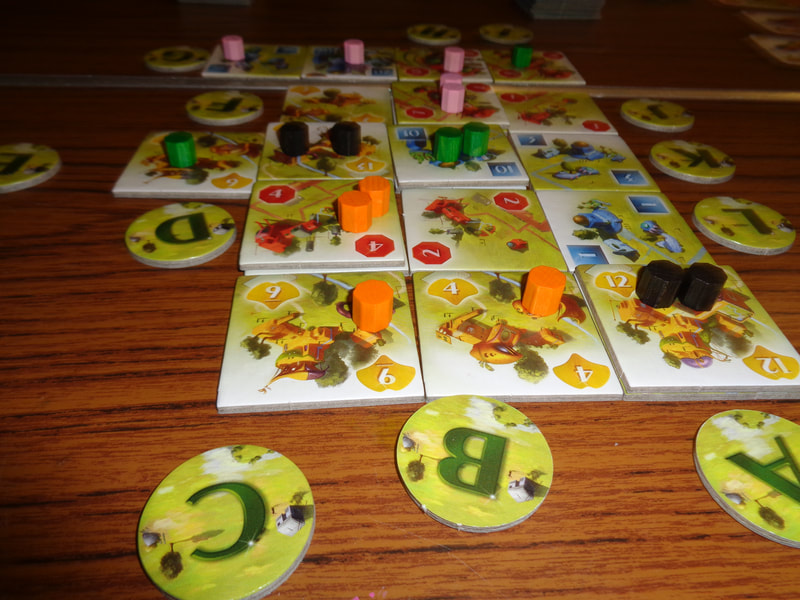
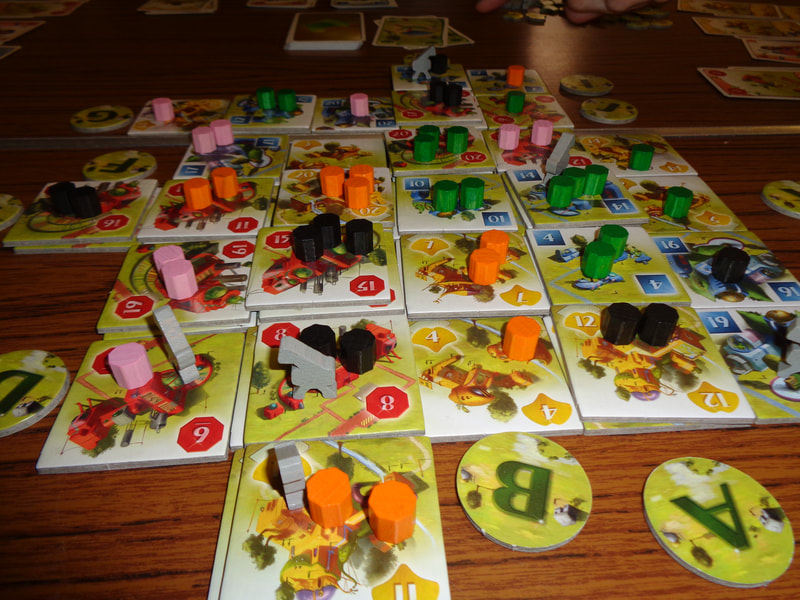

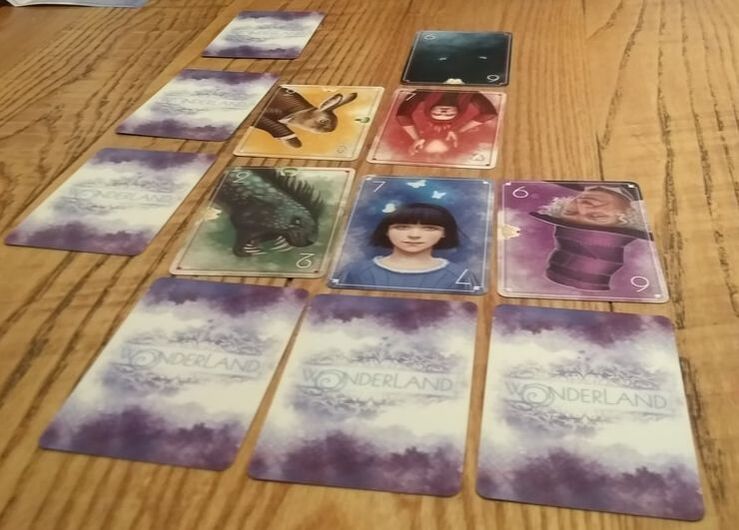
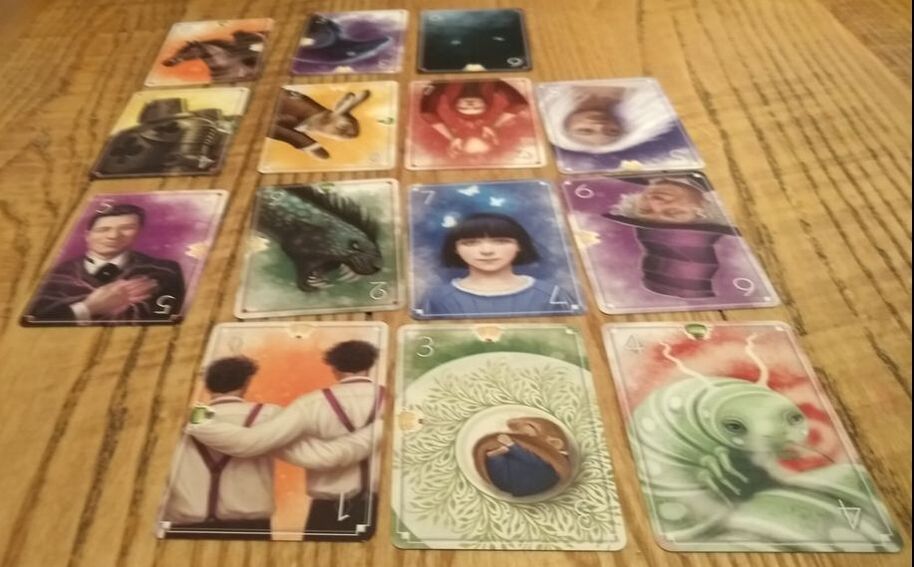

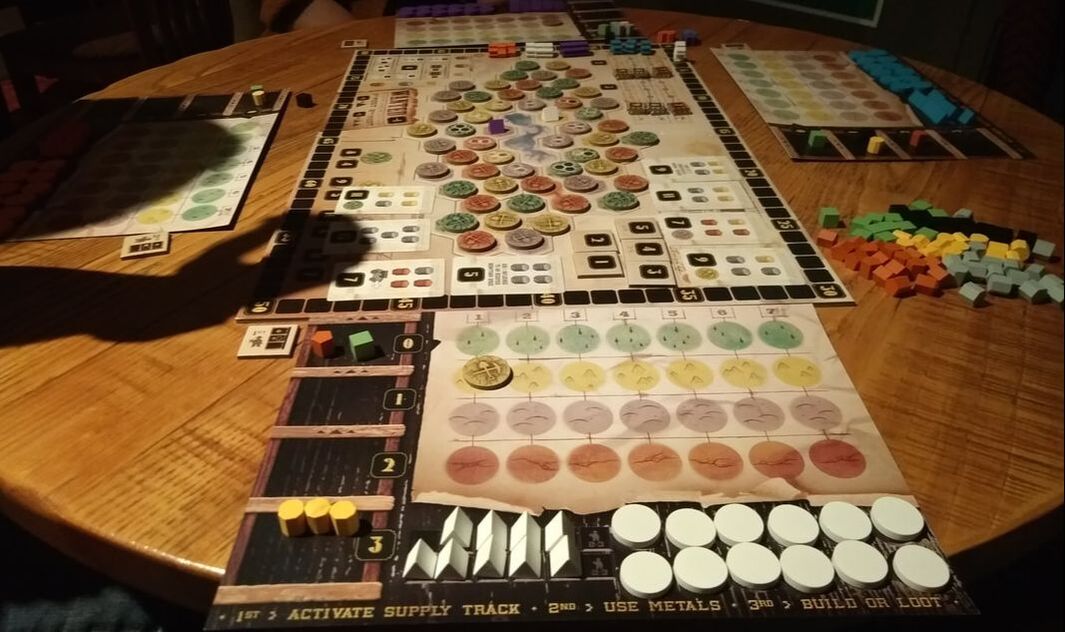
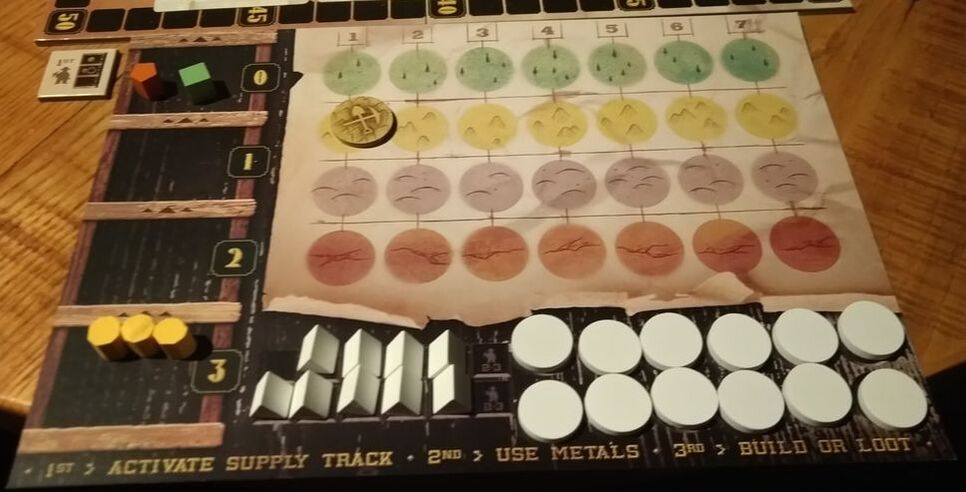
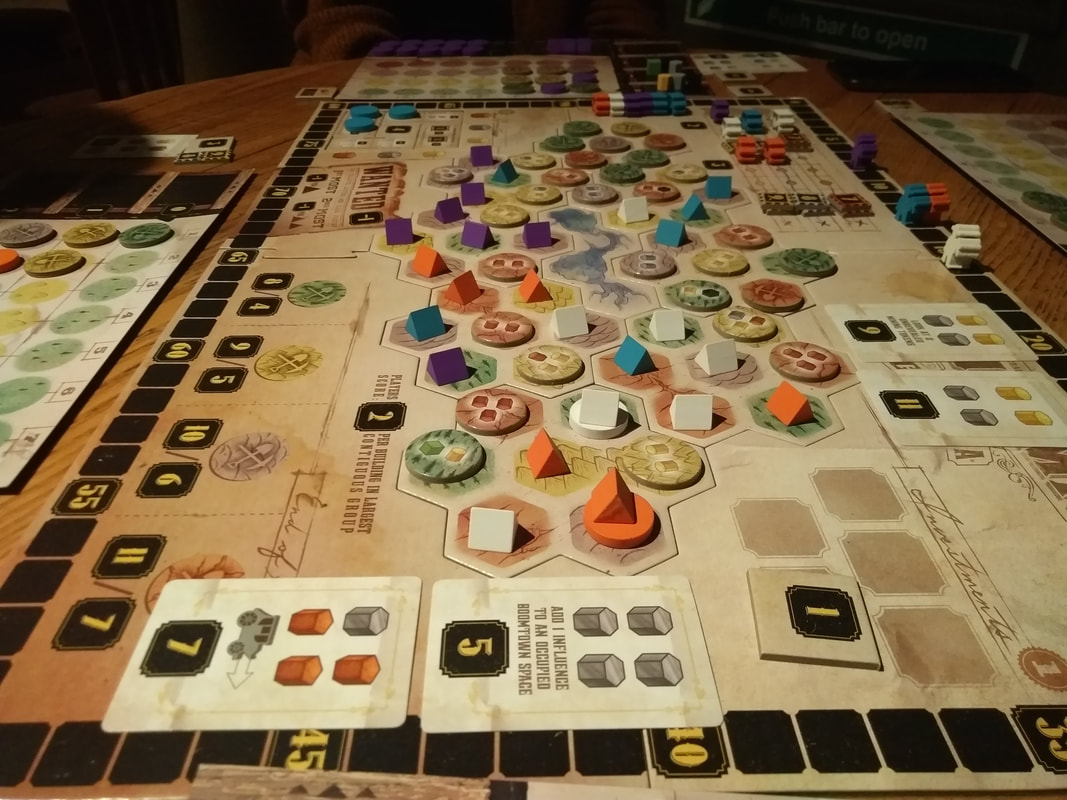
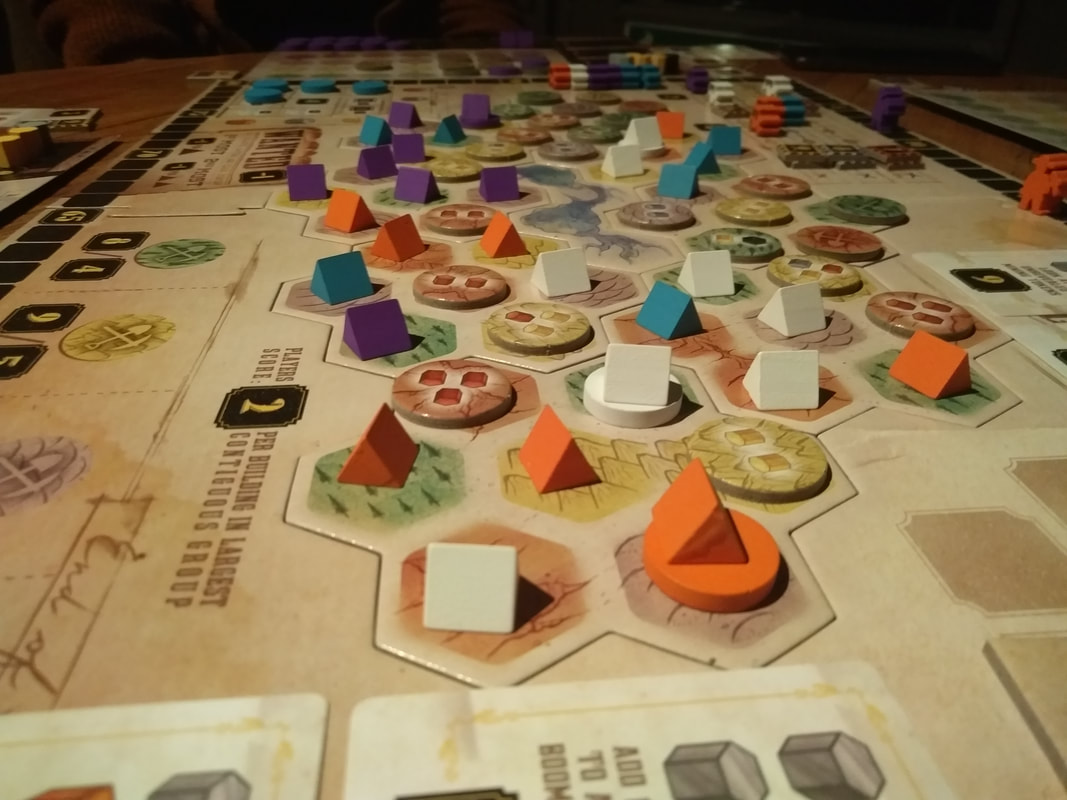
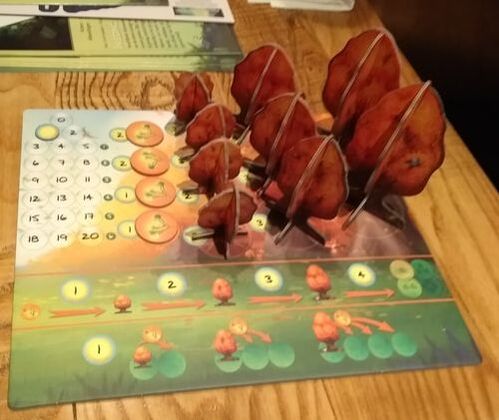
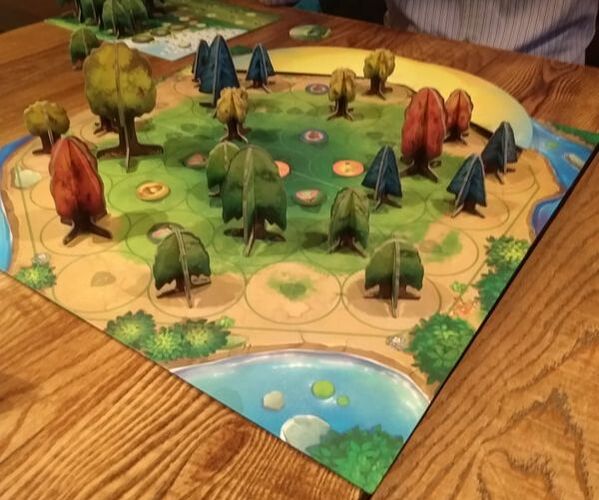

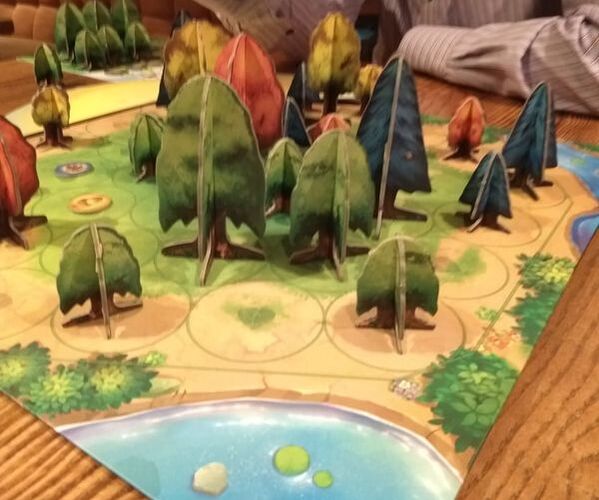
 RSS Feed
RSS Feed
